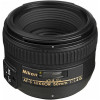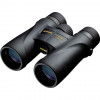What is Perspective in Photography?
Back to Blog |
One of the key components to photography is learning about how perspective affects your photos. Every photograph has perspective and it is up to the photographer to use his or her understanding of it to make images more appealing to the viewer.
:max_bytes(150000):strip_icc():format(webp)/GettyImages-696066994-5a3ae6ab482c5200363f1509.jpg)
What is Perspective?
Perspective in photography refers to the dimension of objects and the spatial relationship between them. It also relates to the position of the human eye in relation to the objects in an image.
The farther away an object is from the human eye, the smaller it becomes. It may seem even smaller if there is an object in the foreground that looks larger because of the relationship between those two objects.
Perspective can also impact the appearance of straight lines. Any lines in an image will appear to converge the farther away from the viewer's eye they are or as they approach the horizon in the distance.
Eye level also determines what a viewer is able to see in a photograph. If you squat down, you have a different perspective of a scene than you would if you were standing on a ladder. Lines would appear to converge (or not) and objects would seem smaller or larger depending on their relationship to the rest of the scene.
In essence, photography perspective can change the way an object looks depending on the object's size and the distance the object is from the camera. This is because perspective is determined not by focal length, but by the relative distance between objects.
How to Work With Perspective
Though we often talk about 'correcting' perspective, it is not always a bad thing in photography. In fact, photographers use perspective every day to add to the aesthetics of an image and make it more appealing.
Good perspective control is what makes the great photographer's work stand out from the norm because they have practiced and understand how the relationship of objects can impact the viewer.
Perspective Control with Lenses
People often believe that a wide-angle lens exaggerates perspective while a telephoto lens compresses it. This is not actually true.
-
A wide-angle lens merely creates the illusion of exaggerated perspective. This is because there is a greater distance between objects in a wide angle photograph and the closest object to the camera will always appear bigger.
-
With a telephoto lens, the distance between objects shrinks, thus causing the difference in the size of the objects to decrease.
The photographer can use these differences to their advantage. For instance, a landscape photograph becomes much more interesting when photographed with an object in the foreground. While this object will look larger in a wide-angle lens, it also adds depth and scale to the image and allows the viewer to get a real sense of space within the landscape.
With a telephoto lens, the photographer can perplex the viewer by making two objects that are known to be different sizes look closer to the same size. For example, by standing a fair distance away from a 2-story building and placing a person in the correct position between the camera and the building, the photographer can give the illusion that the person is as tall as the building.
Perspective from a Different Angle
Another way that photographers can use perspective to their advantage is to give viewers a different look at an object they are familiar with.
By photographing from a lower or higher angle, you can give the viewer a new perspective that is unlike their normal eye-level view. These different angles will automatically change the relationship between the scene's subjects and add more interest to the photograph.
For instance, one could photograph a coffee cup as if you were sitting at the table and it may be a nice image. By looking at the same coffee cup from a lower angle, say equal with the table itself, the relationship between the cup and the table have an entirely new look.
The table now leads you to the cup, making it look larger and more impressive. We do not normally see this scene in it that way and that adds to the appeal of the image.
Correcting Perspective
As fun as perspective is to play with, there are times when you need to correct perspective. This becomes a factor when you need to capture a subject as accurately as possible without distortion or illusion.
Perspective can cause particular problems for photographers when shooting buildings, as these will appear to shrink to a point at their top.
To combat this problem, photographers use special "tilt and shift" lenses, which include a flexible bellow that allows the lens to be tilted gradually to correct for the effects of perspective. As the lens is tilted parallel to the building, the lines will move apart from one another and the dimension of the building will appear more correct. When not looking through the camera, our eyes will still see converging lines, but the camera will not.
Perspective problems can also be corrected with some advanced computer software, such as Adobe Photoshop.
Credit:
Jo Plumridge
Lifewire
Read the full article here



